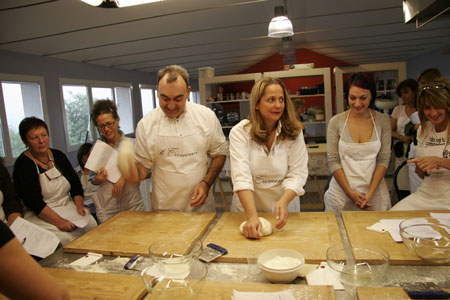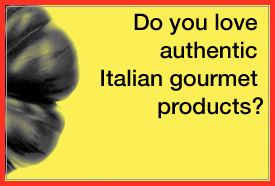On September 4th I have a blind date, but not with a guy… with a monument!
Yes, you got that right, let me explain. On September 4th, the city of Ferrara is hosting the first ever “Street Dinner”. This is a unique opportunity to enjoy art and food together; an ensemble of adventure, gastronomy, natural scenery, conviviality and mistery.
Chic but informal at the same time, the event welcomes a large number of gourmands who, armed with a table, a chair and a bag filled with delicacies, will only find out at the very last minute by what historical building or monument they are going to sit and enjoy all the provided local specialties.
All is possible thanks to text messaging: indeed all participants will find out their destinations step by step directly on their phones. The first text will provide the location of the “welcoming” aperitivo where people can mingle and get to know each other while sipping spumante. A second text will inform all of the location where to pick up the table, the chair and table settings plus the food bag (there are two different menus available. The actual dishes are a secret but you can choose between a meat-based or a fish-based menu). Thirty minutes later another text will inform each guest of their diner location. Some of these locations are, for example, the court of Castello Estense (a magnificent castle built in the center of the city), on Corso Ercole I d’Este with a view of Palazzo dei Diamanti (the house of the National Art Gallery, is one of the most famous buildings in Italy: the white marble exterior consisting of 8500 blocks are carved in the shape of diamonds), along the Listone of Ferrara (a beautiful square by the Duomo), in Via delle Volte, among the Ancient Walls and many other wonderful corners (such as one of the city’s beaches or bridges).
As I said, the menus, like everything else, are secret, but I hope that they will feature some of these local specialties:Cappellacci di zucca, pumpkin ravioli, are served with ragù or butter and sage sauce; tagliatelle, noodles with ragù or mushroom sauce, the maltagliati, irregularly shaped egg pasta cooked with beans, classic lasagna, green lasagna, pasticcio alla Ferrarese, a pie stuffed with maccheroni, béchamel, cheese and ragù with porcini mushrooms; riso con zucca e salsiccia, rice with pumpkin and sausages, or with fish Brodetto, a seafood broth. Rice is also prepared with eels, with ragù, cheese and porcini mushroom. Polenta is often served in place of pasta. It can be fried in butter or dressed with a sauce, cheese, meat or fish. Anguilla (eel) and polenta, polenta with ragù, polenta and sausages are common fare in the Ferrarese. As far as desserts are concerned: ciambella ferrarese is made with flour, eggs, butter and a little sugar; torta di mele is a sponge cake mixed with fresh apples sliced very thin; panpepato is a super rich chocolate cake with candied fruits and nuts, ginger, pepper and other spices and mandurlin dal pont are delicate and crispy cookies made with eggs, sugar and almonds.
For more information: http://www.streetdinner.it
– Natasha Lardera




 Posted by radicchioblog
Posted by radicchioblog 





































